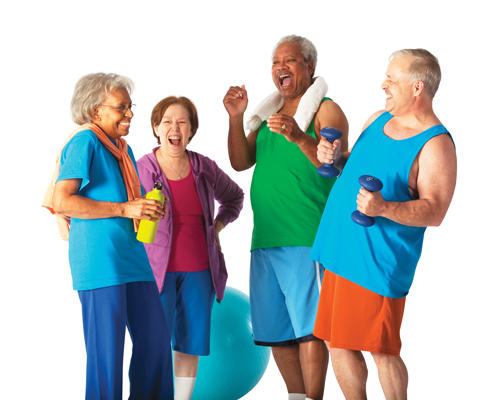
Section Branding
Header Content
Baby Boomers Were The Fitness Generation. So What Happened?
Primary Content

Remember Jane Fonda workout tapes, leg warmers, racquetball? If you do, you’re probably a baby boomer, the first generation to embrace regular exercise and daily workouts. And you are now likely part of a majority of middle agers who have gone from fit to flabby. GPB’s Bobbie Battista takes a look at the rise and fall of the fitness generation.
For the boomer generation coming of age in the 1970s and 80s, it was all about getting physical. I was one of those, working out vigorously 3-5 times a week – aerobics, tennis, jogging, weight training- whatever was the latest trend. Orthopedic surgeon Edie Griffin has seen it all over the decades.
“So it started out with the exercise classes and the tapes and the Jane Fondas and Richard Simmons and then remember racquetball, everybody had a racquetball court and they played and then racquetball had its ups and downs and then aerobic dance came in.”
For some, exercise became almost a religion. In 1968, there were 100,000 joggers. A decade later, there were 27 million.
According to Dr. Ken Cooper, whose book “Aerobics” started the fitness movement, only a quarter of American adults exercised regularly in 1968. 20 years later, it was nearly two-thirds.
And then, it all changed.
Today, just 35% of boomers exercise regularly and 52% have no real routine at all, including me. And the Journal of the American Medical Association recently revealed that our generation is far less fit than our parents’ generation.
What happened?
“They get one medical issue of any kind and all of sudden they drop out of exercise for a while and it’s hard to get back going again and you don’t seem to have the same enthusiasm,” said Griffin. “20 or 30 years ago it was easier to exercise. We were busy but we weren’t overwhelmed. Now you’ve got cell phones, you’ve got iPads. You’re never out of reach, out of touch and you always feel like you have to be doing 10 things.”
Dr. Larry Sperling is a preventative cardiologist at Emory University. I asked him about getting back into the game after quite a bit of time off and he assured me exercise has a cumulative effect with continued long-term benefits.
“One of the most important predictors of who is alive or dead, especially as people get to middle age or older age, is their exercise level and fitness capacity,” said Sterling. “ It trumps almost every other predictor, including their body size and weight. So you’re better to be fit and fat than a skinny couch potato. “
So how do I get back on track. First stop? The gym.
Daniel Rodgers is Wellness Director at the YMCA. He says anybody can get back into an active lifestyle.
“ The level of activity is dependent upon the context of the person and their limitations,” said Rodgers. “We do a lot of strength based training for that as well as some general cardio just to keep them healthy.”
Back in the weight room, I wondered what else was luring my generation back to the gym these days.
“Zumba’s been a big hit,” said Rodgers. “They love the dance, they love the music, the energy."
And that’s the key. Whatever you do, make it fun. And remember, you don’t have to go to a gym. Just move. Gardening, housework, walking the dog ...it all counts towards keeping you healthy and well.
NOTE: Listen to the end of Sharika’s “Waka Waka” to hear Bobbie Battista doing Zumba.
Tags: health, baby boomers, YMCA
